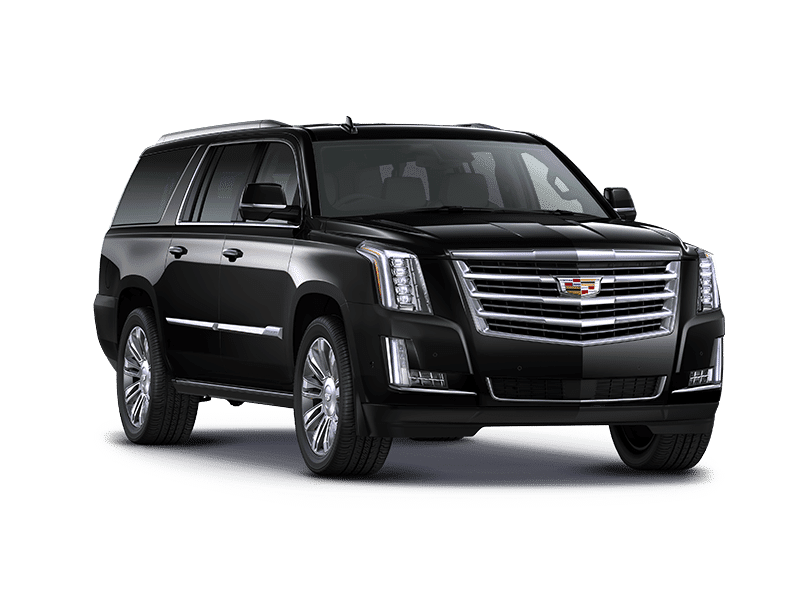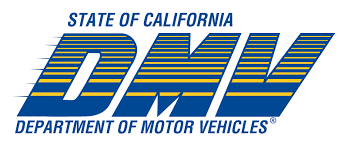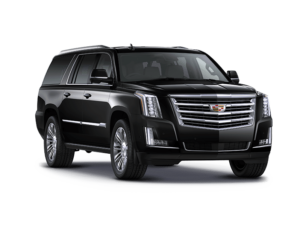Get TCP Help
Get Your California TCP Number
Want TCP Help?
What is TCP
What is it wnat what does it stand for?
TCP Cost
Estimated Costs for getting your TCP Number
TCP Checklist
All the steps required for getting your TCP
TCP Walkthrough
If you want to do it yourself.
TCP Help
What is a TCP Number?
TCP stands for Transportation Charter Permit. A ground transportation company may apply for a TCP Number at any time from the California Public Utilities Commission (PUC). A valid TCP Number is required for charter vehicles to operate in the same way insurance and registration is required for non-commercial drivers and the general public.
Once a TCP number is assigned, it enables vehicles to be chartered specifically for individuals or groups for business or pleasure. TCP numbers are issued by the California Public Utilities Commission to ground transportation companies that meet the criteria for up-to-date insurance requirements, current registration and driver safety.
After a vehicle is assigned a TCP Number, the company itself must comply with other considerations such as participating the DMV Employer Pull-Notice System. Carriers must also participate in the PUC’s drug and alcohol testing program. Additionally, any vehicle seating more than ten is subject to a CHP safety inspection.
Costs
How much can I expect to Spend?
There are many costs associated with getting a TCP number.
Since everyone has different needs, vehicle costs and insurance costs, here are some estimated costs for you to consider before you start the process.

Get Help with the process
Help is available to ensure the process is done right the first time. Fill out our form and one of our experts will get back you you soon.
Estimated Pricing
Know what to expect
$500 to $1500
Depending on your experience and how long you are willing to wait, the easiest way to protect your investment and ensure that there are no mistakes are made in the PUC filings which will slow the process down.
$300 to $2000
Depending on what type of business registration you decide upon, these cost can vary between about $300.00 for a DBA (doing business as) to several thousand dollars for an S-Corp or LLC
$5000 up
If you want to save money in the beginning, we suggest getting a vehicle that you can use for your new limo business but not something outrageously expensive. To make it easier on yourself, you can find a late model MKT for around $5k. If you get one that is already registered commercial, you will thank us later.
$1000 per month
This price is noted as per vehicle. This is just an estimated price as your location, driving record and of course the vehicle that you choose will greatly affect the price. Talk to our insurance professionals to get a quote. Call 405-345-4443 or Click Here for a quote.
$1000 to $2000
Depending on what type of certificate or permit you need, based on what services you want to offer your customers. You can find a list of the different certificates and permits available from the PUC
TCP Checklist
What to do
Getting your TCP Number on your own
TCP Walkthrough
We will now begin a complete walkthrough of how to get a TCP Number in the state of California.
Getting your TCP number is quite simple provided that you are armed with the facts about how to do so.
01
Your new startup
Register your business
In order to get your TCP Number, you must be a business of some kind.
There are several different types of companies to choose from and all of them have different attributes and benefits.
Talk to your lawyer or tax advisor to find out which type of company is best suited for your new company.
In California, there are many types of businesses to choose from. Deciding which is best for you, can be a daunting exercise.
Sole Proprietorship
Corporation
LLC
General Partnership
Limited Liability Partnership
Limited Partnership
Deciding on, registering and starting your business is the bottom line of the 1st step in the acquisition of yours TCP number. If you don’t know what to choose, help is easily available
02
California DMV
Pull Notice Program
In order to acquire a TCP number, it is paramount that you enroll in the DMV pull notice program.
The California Department of Motor Vehicles (DMV) checks all drivers on your registration to ensure that anyone driving for your company has a valid driver’s license and a clean record.
We recommend simply adding yourself at this point to keep it simple.
You can add other drivers easily once the process is complete.

The CA DMV Employer Pull Notice (EPN) program can be completed online on the DMV website. According to the DMV, using the digital service is up to 5 times faster than the normal, paper driven process.
03
Vehicle Acquisition
Getting your Vehicle

This part can be a little complicated as the vehicle must be registered commercially. Many people call us and ask if they can use a vehicle that is currently financed and registered as a “private” vehicle. This will not work. If you are following our steps, you are now a business owner and the vehicle MUST be registered to the business as a commercial vehicle.
What type of vehicle you should use depends on what you already have or dont have.
Here are the possible scenarios and how to deal with them:
I have the pink slip for my vehicle
Super Easy
If you want to use a vehicle that you already own and is registered as a “personal” vehicle, this can be done and it is quite simple if the vehicle does not have a finance company on the pink slip and registration.
Simply go to your local DVM office with proof that you own the business and transfer the registration from your name to the business name.
I don’t have a vehicle I want to use
Easy
If you want to finance your new vehicle, it MUST be financed to your new company and be a commercial loan or lease. If you want to pay “cash” for the vehicle, make sure you register it to your company as a commercial vehicle.
Buying a used vehicle for cash and registering it to your company is the easiest way to go and will save you a lot of headaches moving forward in the process.
My personal vehicle is financed
Complicated
If you make monthly payments to a finance company, you are going to have to jump through some hoops. The easiest way is to pay off the finance company and get the title to the vehicle. If you cannot afford to pay off the vehicle, you will need to transfer the loan to your new business and makie the loan a commercial loan. This can be extremely difficult if you don’t have nearly perfect credit
Even if you have a beautiful, brand new SUV that is registered to you personally, it may be a lot easier for you to spend a few thousand dollars on a used vehicle and register that vehicle to your new company. Once you have your TCP number, adding and removing other vehicles is a lot easier.
04
Commercial Registration
Registering your car
To acquire a commercial registration on any vehicle, you must provide a certificate to the DMV with the unladen weight of the car or truck. We recommend doing this as soon as you decide what vehicle you are going to use for your TCP permit. To get the unladen weight of your vehicle, simply go to any public scale near you that provides documentation for the DMV.
There is a nominal fee associated with the weighing the vehicle and getting the weight certified. This is probably the easiest part of the entire process. Do not go to the DMV to register your vehicle commercially without the certificate of unladen weight or you will have to make a return trip to the DMV.
Get your Commercial Registration at the CA DMV
If you want the process at the DMV to go smoothly, please be advised that the following is mandatory:
- The vehicle type is 31 which indicates a commercial vehicle under 11,500 pounds. We strongly recommend this type of registration for your first vehicle. If you would like to use other types of livery vehicles in your business such as large party busses or the like, wait until you have your TCP number and add those types of vehicles later.
- The vehicle is registered to the business. If the vehicle is not registered to the business, you will not be able to complete the process with the PUC.
- Unladen weight (UNLADEN/C/CGW). In order to register any commercial vehicle with the DMV, the vehicle must be weighed be a certified vehicle weigh station
05
Insurance
Commercial Auto Insurance
You don’t need commercial vehicle insurance until you submit your initial application to the PUC. Your pull notice will take about 30 days and you will not be able to drive any passengers until you receive your completed TCP number.
You can register a vehicle commercially as long as the vehicle has any kind of liability insurance. Commercial insurance is very expensive and you certainly must acquire commercial insurance to transport passengers in California. To save you some money in the beginning we recommend holding off until everything above this point has been completed and you are ready to send in your application to the PUC.
06
Filing with the CA PUC
The Initial PUC Application
At this point, we suggest getting some help. Dealing with the California Public Utilities Commission is a nuanced process. There is a learning curve. If you don’t mind the process taking a while and possible costing a little more money, you can file the forms yourself.
Having completed the above steps, you should have the following before you file anything with the PUC:
A registered legal business name
A ‘Pull Notice’ from the DMV
A commercially registered vehicle
Commercial Auto Insurance
Now comes the time for a lot of paperwork. A list of all the forms you need from the CA PUC can be found on their website here. We recommend bookmarking that page as you will need to refer back to it in the years to come.
Before You Begin your initial filing
You must decide what type of permit or certificate you want to apply for. There are 6 choices depending on how you want to service your clients in the future. The list below is from the PUC Website.
“A” Certificate
(PUC 5371.1 and 5383)
- Chartered service
- May operate vehicles of any seating capacity
- May operate from any point to any point within California
- May also conduct round-trip sightseeing and may charge individual fares in doing so.
- Except for round-trip sightseeing, charges must be based on vehicle mileage, time of use, or combination of both.
- May be transferred (fee: $300)
“B” Certificate
(PUC 5371.2 and 5383)
- Chartered service
- May operate vehicles of any seating capacity
- May not pick up passengers more than 125 air miles from the carrier’s home terminal. This mileage restriction applies only to vehicles seating 10 or fewer, including the driver.
- Charges based on vehicle mileage, time of use, or combination.
- May be transferred (fee $300)
“C” Certificate
(PUC 5371.3 and 5383)
- Provide transportation services incidental to commercial balloon operations, commercial river rafting, or skiing where no additional compensation is provided for the transportation. (If you will perform transportation that is incidental to a business other than these three, a “Z” permit, below, is the appropriate authority.)
- Commercial balloon operations: see exemption under the “Charter-Party Exemptions” link below.
- May operate from any point to any point within California
- May be transferred (fee $300)
“P” Certificate
PUC 5384(b)
- Charted service
- May operate only vehicles seating fewer than 16, including the driver. If you will operate one vehicle 16 or more, even occasionally, you may not do so with a “P” permit.
- May operate from any point to any point within California
- Charges based on vehicle mileage, time of use, or combination
- May not be transferred
- NOTE: Even if you do not intent to operate any vehicle seating 16 or more in the near future, if you think you may do so later, consider applying for a “B” certificate instead.
“S” Certificate
PUC 5384(c)
- This is for carriers conducting “round-trip sightseeing service.” See section below on “Round-trip Sightseeing”.
- May operate vehicles of any seating capacity
- May operate from any point to any point within California
- May charge individual fares. May also base charges on vehicle mileage, time of use, or combination. (The “A” certificate is the only other type of TCP authority that allows individual charges, only when conducting roundtrip sightseeing service.)
- May not be transferred
“Z” Certificate
PUC 5384(a)
These are “specialized carriers”, who do not hold themselves out to serve the general public, but only:
- Provide service under contract with industrial and business firms, governmental agencies, and private schools OR
- Transport agricultural workers to and from farms for compensation
- Conduct transportation services, which are incidental to another business. (However, note that if the transportation is incidental to either commercial balloon operations, commercial river rating, or skiing, the appropriate authority is a “C” certificate, above.)
Fill out and Submit your paperwork to the PUC
Once you have determined the best type of certificate or permit for your business, it’s time to fill out and submit your initial filing to the PUC.
CPUC form PL739 a-c and PL664
The first document to fill out and submit to the PUC is the form *PL739 which is actually 4 forms in one. The
PL739 includes:
- PL739-A Driver Statement of Application PSG
- PL739-B Terminal Inspection Fee Statement
- PL739-C Modified Limousine Inspection Fee Statement
- PL664 Passenger Carrier Equipment Statement and Instructions
You must include a copy of the DMV commercial vehicle registration for each limousine listed on Form PL664 (a “limousine” is defined as a vehicle seating 10 or fewer persons, including the driver). Click on the following links for samples of the DMV commercial vehicle registration:
Be sure to fill out these forms carefully and attach all of the required supplemental documentation. *any mistakes in your filing will cost you time and you could lose your filing fee. Once you have completed the forms and attachments, mail your completed packet to the PUC here: CPUC License Section 505 Van Ness Ave. San Francisco, CA 94102
*If you will you perform interstate transportation such as transfers to Las Vegas, you will need a DOT interstate permit.
Interstate transportation is transportation that crosses a state line, even if the trip begins and ends in
one state, like California. Interstate transportation is not under the jurisdiction of the California Public
Utilities Commission (CPUC) but may require authority from the federal government.
If you plan on performing any interstate transportation, ask the Federal Motor Carrier Safety Administration (FMCSA:
part of the U.S. Department of Transportation) whether you will need federal authority:
Mailing Address: FMCSA
1200 New Jersey Avenue SE Washington, DC 20590
Phone: (800) 832-5660 TTY: (800) 877-8339
Web site: http://www.fmcsa.dot.gov/
07
Drug Testing
Find a facility
After your paperwork has been sent to the PUC, it’s time to wait. Over the years the PUC moves at different speeds depending on their budgeting and demand.
In about 30-60 days, you will get a notice that they want you to enroll in a drug testing program for your registered drivers.
Contact a drug testing facility in your area and make sure they are within your budget as drivers will need to be tested annually. The documents for the drug tests will be sent directly from the facility to the PUC electronically.
After your paperwork has been sent to PUC, it’s time to wait. In about 30-60 days, you will get a notice that they will want you to enroll in drug testing program.
Contact a drug testing facility. We recommend using Walk-In Lab. They offer the most competitive prices, and have thousands of lab locations across the US (with LabCorp and Quest Diagnostics). Their tests are affordable, accurate, and convenient. They also have 24/7 customer service to help you through the purchase process if you have any questions.
08
Finalize
Finish your PUC Registration
You may not have to do anything other than wait at this point. If there are any issues that the CA PUC has with your paperwork, they will contact you by mail and ask you to correct any mistakes that have been made. You will need to respond to their requests in a timely manner or they could kick out your application and you will have to start all over again. The more careful you are on #06 in this tutorial, the less chance there is of having any corrections necessary.
Provided there are no problems with the drug testing program and no errors on your TCP application, your application should be approved and you will receive your TCP Permit or Certificate in 30-60 days.
After your paperwork has been sent to PUC, it’s time to wait. In about 30-60 days, you will get a notice that they will want you to enroll in drug testing program.
Usually, the first entity to be notified that your TCP has been approved and issued is your insurance broker as they are notified electronically. At this point, adding drivers or vehicles to your company is quite simple.
To add a driver, talk to your insurance broker to add a driver to your policy.
To add a vehicle, fill out form PL664 for each new vehicle you want to add to your fleet. Make sure they are weighed and commercially registered to your company.
09
Airport Permits
Contact your local airports
At this point, your are no legal to drop off passengers at just about any airport in California. You are also legal to pick up passengers at most airports, however, many California Airports do not let TCP carriers pick up arriving passengers without a special permit specific to that airport. Some airports do not let you enter at all.
In Los Angeles, LAX, John Wayne and Ontario airport all require a special permit for pick-ups. Burbank Airport (Bob Hope) does not have any such requirements.
It is important to check with any airports you plan on servicing to find out their specific licensing guidelines and the associated costs.
Many small limo companies attempt to pick up passengers at airports prior to receiving and paying for their license, if caught, the results are disastrous. The fines are huge and they may arrest your driver and impound your vehicle.
Congratulations!
If you have walked through this process and successfully acquired a TCP license, we thank you for letting us help.
Thank you for visiting our TCP walkthrough. Please feel free to permalink this page for future reference.



